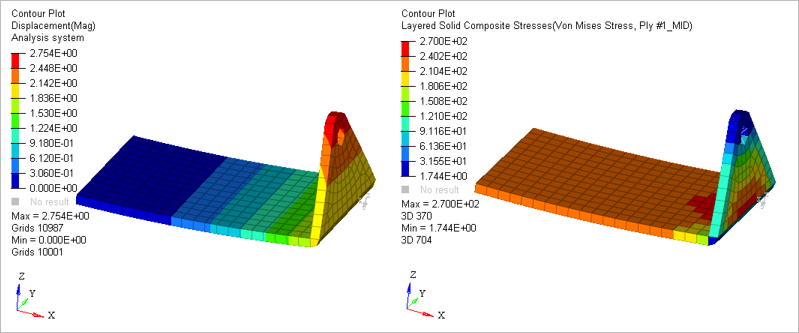OS-E: 0175 Continuum Shell Composites Using PCOMPLS
The PCOMPLS entry can be used to define continuum shell composites using solid elements. Currently first order CHEXA and CPENTA solid elements are supported.

Figure 1. A Force is Applied on the RBE2 Element and the Opposite End is SPC’d
Model Files
Refer to Access the Model Files to download the required model file(s).
The model file used in this example includes:
pcompls.fem
Model Description
Conduct a continuum shell composite analysis of a bracket using PCOMPLS entry. A force is applied on the RBE2 element and the other end of the bracket is fixed at all degrees of freedom (Figure 1).
- FE Model
- Elements Types
- CHEXA
- MAT9OR
- Young’s Modulus
- E1=1.0E5
- Poisson's Ratio
- NU1=0.4
Results

Figure 2. (a) Displacement; (b) Composite Stresses